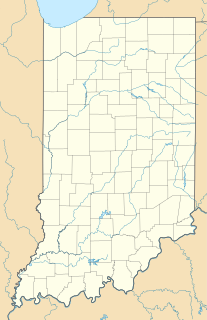
Cass Township is one of twelve townships in White County, Indiana, United States. As of the 2010 census, its population was 585 and it contained 228 housing units.

Koleen is an unincorporated community in Jackson Township, Greene County, Indiana.

Byrneville is an unincorporated community in Jackson Township, Harrison County, Indiana.

Mott Station is an unincorporated community in Jackson Township, Harrison County, Indiana.

Ramsey is an unincorporated community in Jackson Township, Harrison County, in the U.S. state of Indiana.

Acme is an unincorporated community in Hamilton Township, Jackson County, Indiana.

Clear Spring is an unincorporated community in Owen Township, Jackson County, Indiana.

Freetown is an unincorporated community and census-designated place in Pershing Township, Jackson County, Indiana, United States. As of the 2010 census the population was 385.

Houston is an unincorporated community in Salt Creek Township, Jackson County, Indiana.

Kurtz is an unincorporated community in Owen Township, Jackson County, Indiana.

New Farmington is an unincorporated community in Jackson Township, Jackson County, Indiana.

Sparksville is an unincorporated community in Carr Township, Jackson County, Indiana.

Spraytown is an unincorporated community in Pershing Township, Jackson County, Indiana, United States.

Surprise is an unincorporated community in Hamilton Township, Jackson County, Indiana.

Weddleville is an unincorporated community in Carr Township, Jackson County, Indiana.

Georgia is an unincorporated community in Spice Valley Township, Lawrence County, Indiana.

Norman is an unincorporated community in northwestern Owen Township, Jackson County, Indiana, United States. It lies along State Road 58 northwest of the town of Brownstown, the county seat of Jackson County. Its elevation is 869 feet (265 m), and it is located at 38°57′9″N86°16′30″W. Because the community had two different names, the Board on Geographic Names officially decided in favor of "Norman" in 1943. Although Norman is unincorporated, it has a post office, with the ZIP code of 47264.
Mill Creek is a stream in Jackson County, Indiana, in the United States. It is a tributary to the White River.
Newry is an unincorporated community in Jackson County, Indiana, in the United States.
Conologue is an unincorporated community in Jackson County, Indiana, in the United States.














